Story Behind Dominant Dog Collars vs. Slip Collars
Dominant Dog Collars (DDC) and Slip Collars are tools used to manage dominant, aggressive, or reactive dogs. In this article, you’ll learn the differences between both collars and why Dominant Dog Collars should be used on almost all dogs.
The Story Behind the Dominant Dog Collar
I designed the Dominant Dog Collar back in the 1990s when I used to import selection-tested police service dogs from Germany. I would bring them into the US and sell them to vendors who would then finish training them for a police department.
Many of these high-drive dogs came from Germany where as puppies, they were sold to pet homes. As they grew up they were not properly managed and trained. They didn’t know rules and ended up being handler assertive, pushy, or aggressive. So the owners sold them. I would buy them and bring them to America. When these dogs came to my kennel, most of them came with behavioral baggage. It was common for the dogs to resort to handler aggression when asked to do something they did not want to do. Many of these dogs needed to learn that old habits would not work with me. I didn't have a lot of time to teach them that handler aggression would not be tolerated. I ended up having dogs that wanted to bite me.
If animal rights people saw the arguments I had with many of these dogs, they would probably go a little crazy. They would say that those dogs needed to be put to sleep--but they would have been dead wrong. In every case, the dog's issues just needed to be cleared up and they were over it. Every one of those dogs (except one that had a brain tumor), went on to have a full, productive career in law enforcement.
I learned very quickly that a slip collar worked much better than a prong collar. In fact, the prong collars were just triggers for handler aggression. I also learned that many of these dogs with big heads required slip collars that had a ton of slack. That was a problem when these dogs were trying to bite me. The less slack, the better the timing on getting control of the dog.
So I basically designed a dominant dog collar to reduce slack. Dominant Dog Collars allowed me to get control over these dogs much quicker.
Perhaps I should’ve patented or trademarked the collars. But now, there are several competitors that are selling Dominant Dog Collars.
However, what makes us stand out is the cord we use. We use a solid hollow core polypropylene cord that won’t stretch. Our competitors use cheaper nylon cord material that will stretch 1 to 3". Three inches can be the difference between getting dog bit and getting control of the leash.
Nylon vs polypropylene rope - what's the difference?
On the surface, they appear to be identical, and they do share many similar features. For example, they're both constructed from industrial-grade synthetic materials, making them a stronger alternative to natural fiber ropes. Additionally, both materials are resistant to UV rays, abrasion, and rot.
But there are some key differences between the two, which make them either more suitable or less suitable for certain jobs.
The 3 differences between nylon and polypropylene
-
Flexibility
Nylon has a high level of flexibility. When necessary, it's possible to stretch nylon rope by up to 20% without affecting its strength - and it will simply return to its original size afterwards. This makes it particularly good when you need the rope to be more shock absorbent, such as towing or mooring.
This is not a feature we want with slip leads or dominant dog collars
-
Absorbency
Both nylon and polypropylene sink in water. However, they differ greatly in terms of their absorbency.
Although nylon rope is normally very strong it absorbs liquid quickly and easily, and this compromises its strength significantly. The fibers become waterlogged and start to sag. They also take a long time to dry. Therefore, nylon isn't the best option for wet conditions.
Polypropylene ropes, on the other hand, do not absorb water. They retain their normal level of strength when they're wet and, as a result, they are a better choice for dog training applications.
-
Temperature resistance
Another important difference between nylon and polypropylene is their resistance to heat. Nylon rope cannot withstand heat as well as polypropylene. Polypropylene is typically a better choice for working in higher temperatures.
The Challenges of Using a Slip Collar
Slip Collars are designed to slip over the top of a dog’s head and down to its neck. If you have a dog with a larger head such as a Pitbull or Bulldog, you’ll need to have a larger slip collar just to get over the head. In fact, these dogs have larger heads than their necks. So once the slip collar is on the dog it has 5 to 9 inches of slack when down on the neck.
When that happens, handlers have to move his or her leash the length of that slack before they even get the dog's attention. This dramatically affects the timing of your training correction or the timing of getting control of the dog that is acting inappropriately.
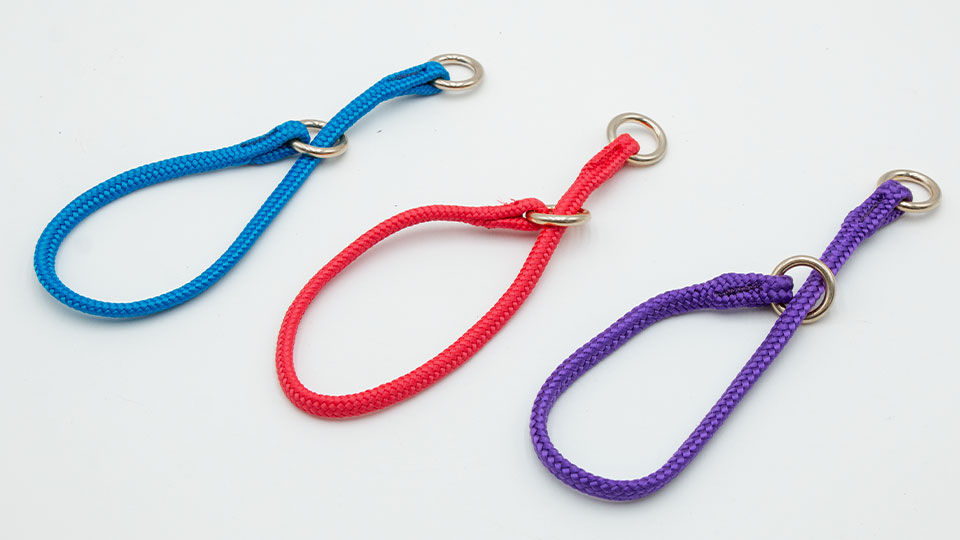
Dominant Dog Collars are Designed for a Secure Fit
Dominant Dog Collars (DDC) were designed by Ed Frawley as a better solution to Slip Collars. DDC has an "O" Ring on one end and a clasp on the other end with a floating ring on the cord.
The DDC doesn't go over the head. It wraps around the neck and the clasp is clipped onto the floating "O" Ring. This allows for a much smaller collar fitting around the dog's neck - with very little slack. A good fit is when the collar is just under the jaw and right behind the ears, there will be between 1 inch and 3 inches of slack.
When properly sized, a DDC doesn't require much leash movement to put leash pressure on the dog's neck. Compare it to the slip collar with 9 inches of slack where you really have to take a lot of leash slack to apply pressure. This dramatically changes the timing of a correction.
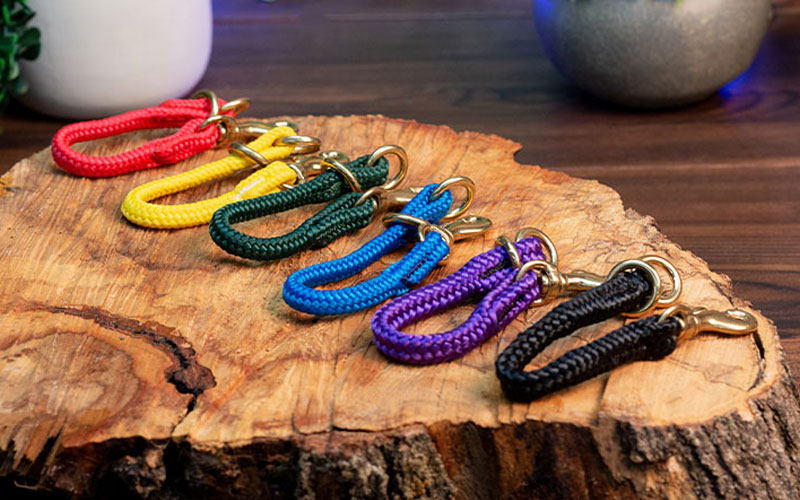
Finding the Right Collar and Size
It is crucial to have a properly sized Dominant Dog Collar. When you measure your dog’s neck, you need to measure right underneath the dog’s chin and right behind the ears, then add 1 to 3 inches to that measurement to get your dog's correct DDC size.
Leerburg still offers the Nylon Slip Collar for trainers who have dogs with small heads that a slip collar can get over the head and only leave 1 to 3 inches of slack.
How much pressure should you apply?
The amount of pressure you apply depends on the dog. I look at it like how I look at a correction on a dog. A correction is not designed to punish a dog. It should only be strong enough to get a behavior change. That’s the same concept to use when looking at Dominant Dog Collars.
This is done with the positive punishment quadrant of operant conditioning, using pressure to tell the dog they are wrong and should not try that behavior again. Corrections should only be applied for behaviors the dog has demonstrated they understand and can perform reliably, and only after reward-based training has established clear communication about what is expected.
Some behaviors (like jumping on people, nipping, or counter-surfing) may require immediate management or correction even before an alternative is fully trained, for safety or practical reasons.
There are two uses of a Dominant Dog Collar
- They are used as a Training Collar as described above.
- They are used as a back-up collar when training with a prong collar. Prong collars can and do come apart when not sized properly or if prongs are bent and loose. When a handler doesn't have a back-up collar on their dog, when the prong comes apart, they find their dog OFF LEASH at a time they need control of that dog. That's the moment in time they wish they had a back-up collar on the dog.
DDC as a Back-up Collar
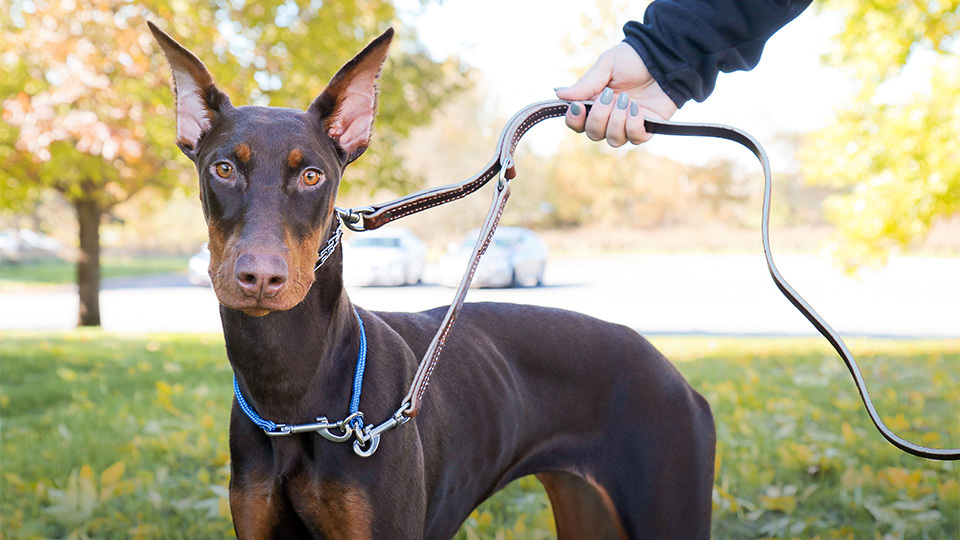
When trainers use prong collars, we always recommend using a second back-up collar (like our DDC) to ensure the dog remains on leash and under control if and when the prong accidentally pops apart.
This always happens because the prong collar is too big and has not been adjusted to fit properly. Those collars are just hanging around the dog's neck. Keep in mind if there isn't a backup collar on the dog, it is now off leash, which is a bad scenario.
We have made and sold multiple types and sizes of Prong Collar Leashes for years. These leashes have 2 ends; they are designed to clip to two collars, with the shorter end going to your main collar and the longer end going to your backup collar.



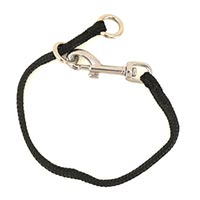
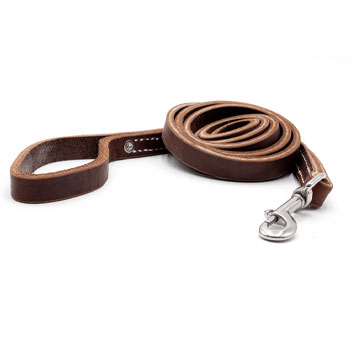
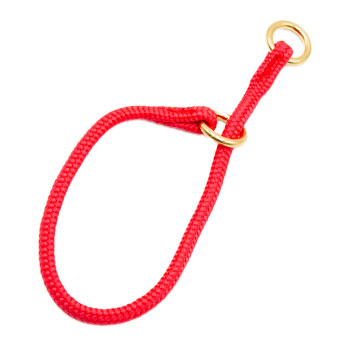

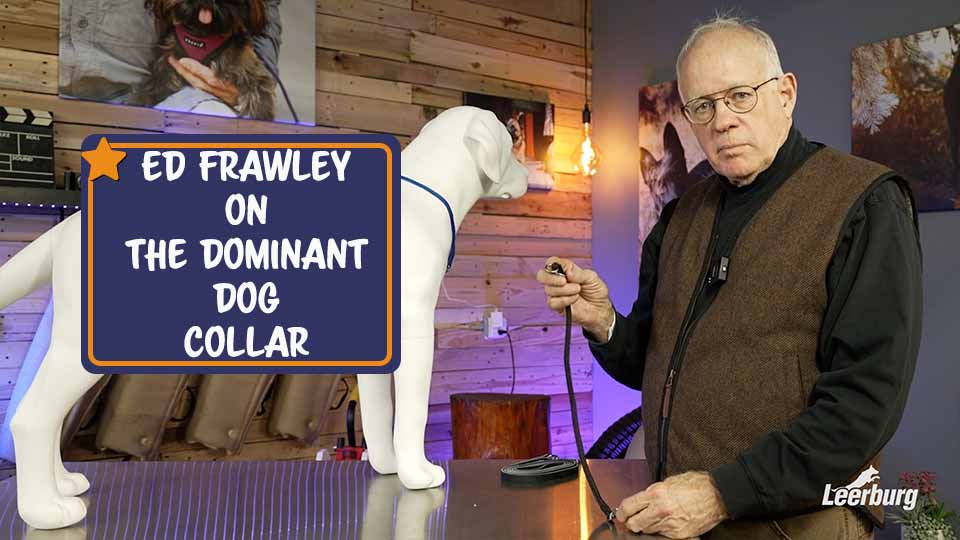
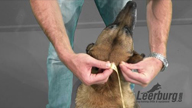
Ask Cindy.